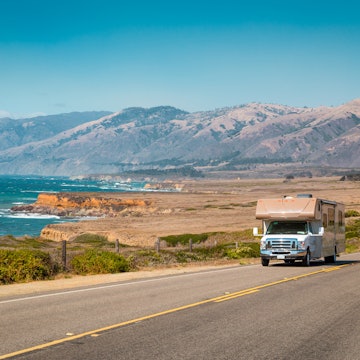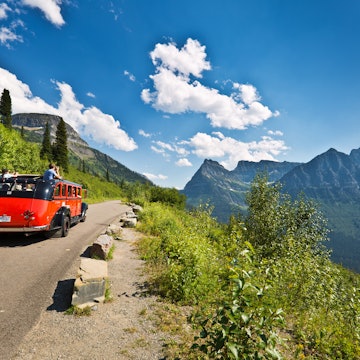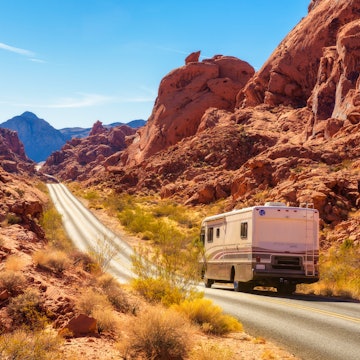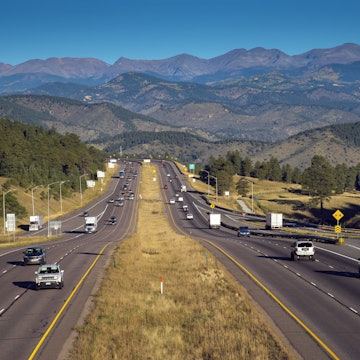

Cycling is a great way to explore Denver © Daniel Bendjy / Getty Images
Denver is an easy-to-navigate midsize city, located at the base of the Rocky Mountains. Though Colorado’s capital is primarily car-centric, it has a robust light rail and bus network that makes getting around without a vehicle a breeze.
Walking and biking are also great alternatives, especially in Denver’s core downtown neighborhoods – though be forewarned, Denver is called the Mile High City for a reason. It’s situated at 5280ft above sea level, and until you get used to the altitude, you may find yourself huffing and puffing if you choose to go with a human-powered option. Scooters and ride-share vehicles are also abundant.
Planning a trip to Colorado soon? Here’s what you need to know about getting around in Denver.

Reduce your environmental impact by taking the bus or train
Denver’s public-transit system is clean, efficient and easy to use – and perhaps more importantly, it can get travelers to and from most of the Mile High City’s biggest attractions. The Regional Transportation Department (known locally as RTD) operates the metro area’s light and commuter rail routes and buses, plus the free MallRide shuttle service on the otherwise pedestrian-only 16th Street Mall.
Public transit can take travelers all over Denver as well as to suburbs and adjacent cities, such as Arvada, Boulder and Golden. You can even take the light rail from Denver International Airport to downtown and vice versa, which makes it an easy choice to skip the rental car.
The simplest way to chart a course via bus or light rail is to use RTD’s free trip-planning platform, Next Ride. Fares start at $3 for local trips, $5.25 for regional journeys and $10.50 for airport rides, and RTD also offers an array of multiride ticket books and day passes if you’re planning to do a lot of traveling.

Immerse yourself in neighborhoods while walking
With shady, tree-lined sidewalks and bike paths, many of Denver’s neighborhoods are walkable. Not only is walking free and environmentally friendly, but it also provides travelers with an up-close view of the city’s historic buildings and houses, some of which date back to the Gold Rush days of the mid-19th century. Another bonus: if you’re walking west, you’ll likely be able to see the snowcapped Rocky Mountains in the distance too.
Lined with restaurants, bars, shops and entertainment venues, the car-free 16th Street Mall is one of the most popular places to walk in Denver. Renowned architect IM Pei designed this mile-long pedestrian promenade, where you can also catch a ride on a horse-drawn carriage.
See the sights via bike or scooter
Biking is a popular and safe mode of transportation for Denverites and visitors alike. The city has more than 850 miles of paved trails, plus 137 miles of on-street bike and scooter lanes.
While you’re in town, you can take short point-to-point trips on electric bikes and electric scooters via Denver’s shared micromobility program, operated by Lyft and Lime. For longer rides, rent a bike from one of the bike shops in town, such as Evo Denver or Wheel Fun Rentals.
Explore the suburbs and the mountains by car
Denver is a car-centric city, with a sprawling landscape of suburbs surrounding the downtown core. Renting a car is handy for exploring some of these adjacent locales, such as Lakewood, Aurora, Littleton, Centennial and Highlands Ranch.
Another great reason for driving? Heading into the Rocky Mountains west of Denver. Though some public transit options are available – chiefly the regional Bustang routes operated by the Colorado Department of Transportation – these can only get you so far. Once you’re in the mountains, you’ll likely want a car to reach far-flung trailheads and campsites.
Denver International Airport has nearly a dozen rental car companies on-site, so whatever your brand of your choice, you’ll likely find it here: Alamo, Avis, Budget, Dollar, Enterprise, Fox, Hertz, National, Payless, Sixt and Thrifty.
There are public and private parking lots and garages throughout the city of Denver, as well as on-street parking. If you’re staying at a hotel, be forewarned: you’ll likely need to pay for pricey valet parking, which can range from $30 to $60 per night.
If you don’t want to deal with parking or rental fees, you can book a ride through platforms like Uber and Lyft, which have a big presence in Denver. You’ll also find a handful of taxi, limo and charter bus services here.
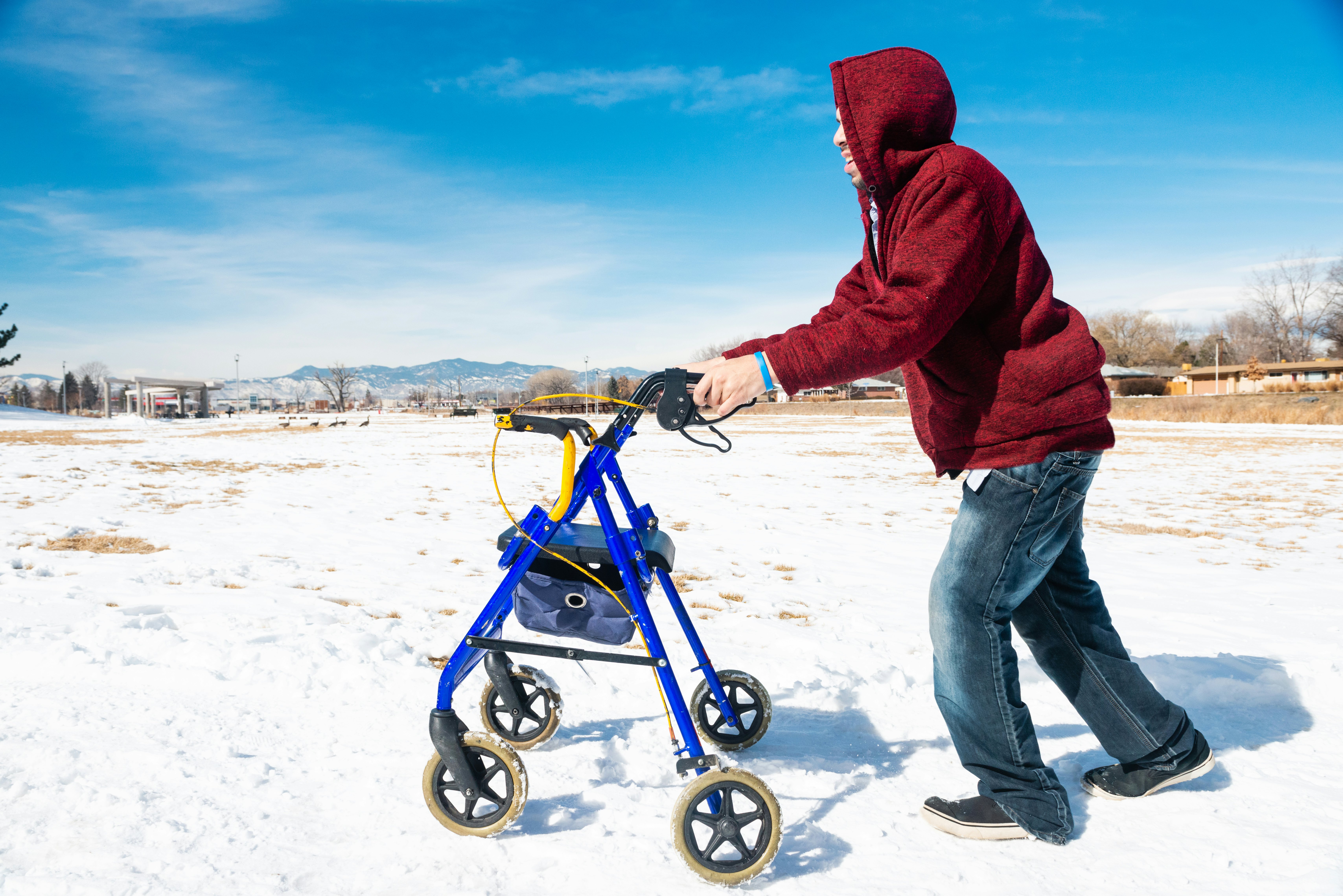
Accessible transportation in Denver requires more planning
For travelers with disabilities, getting around Denver is doable, but may require a little extra research. From Denver International Airport, several accessible transportation companies offer rides into the city, including Mobility Plus, Metro Cab, Dashabout and Mobility Transport Service. But most require advanced notice of 24 to 48 hours, so travelers with mobility challenges will need to plan ahead.
To explore Denver, travelers with disabilities have a few public transit options. All RTD buses and rail vehicles are designed to be accessible for riders using mobility devices, like walkers, crutches, wheelchairs, electric scooters and Segways. RTD also trains its bus and rail drivers to assist passengers with disabilities.
In addition, RTD operates a service called Access-a-Ride, which provides transportation for visitors who cannot access the agency’s fixed-route public transit services. But this option requires quite a lot of prep work, including a written application, a medical verification form, an in-person interview and a transportation assessment.
The theaters and concert halls at the Denver Center for Performing Arts try to ensure visitors with disabilities have a smooth and enjoyable experience. They offer seating for people with disabilities (though you’ll need to request it while booking your ticket), accessible restrooms, wheelchairs and assistive-listening devices. The city is also home to numerous organizations that offer accessible sports and outdoor programs, ranging from curling to rock climbing.
Though Denver is primarily flat, its sidewalks are in varying conditions, which may make it more challenging for those using wheelchairs and other mobility aids to get around. In the winter, sidewalks can also become slippery and bumpy because of ice and snow – especially north-facing sidewalks or those in the shadow of a building.












